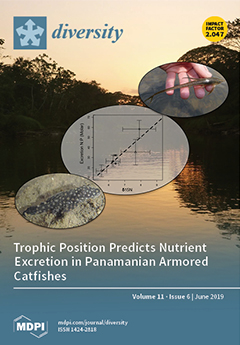Critical loads of atmospheric deposition help decision-makers identify levels of air pollution harmful to ecosystem components. But when critical loads are exceeded, how can the accompanying ecological risk be quantified? We use a 90% quantile regression to model relationships between nitrogen and sulfur
[...] Read more.
Critical loads of atmospheric deposition help decision-makers identify levels of air pollution harmful to ecosystem components. But when critical loads are exceeded, how can the accompanying ecological risk be quantified? We use a 90% quantile regression to model relationships between nitrogen and sulfur deposition and epiphytic macrolichens, focusing on responses of concern to managers of US forests: Species richness and abundance and diversity of functional groups with integral ecological roles. Analyses utilized national-scale lichen survey data, sensitivity ratings, and modeled deposition and climate data. We propose 20, 50, and 80% declines in these responses as cut-offs for low, moderate, and high ecological risk from deposition. Critical loads (low risk cut-off) for total species richness, sensitive species richness, forage lichen abundance and cyanolichen abundance, respectively, were 3.5, 3.1, 1.9, and 1.3 kg N and 6.0, 2.5, 2.6, and 2.3 kg S ha
−1 yr
−1. High environmental risk (80% decline), excluding total species richness, occurred at 14.8, 10.4, and 6.6 kg N and 14.1, 13, and 11 kg S ha
−1 yr
−1. These risks were further characterized in relation to geography, species of conservation concern, number of species affected, recovery timeframes, climate, and effects on interdependent biota, nutrient cycling, and ecosystem services.
Full article





